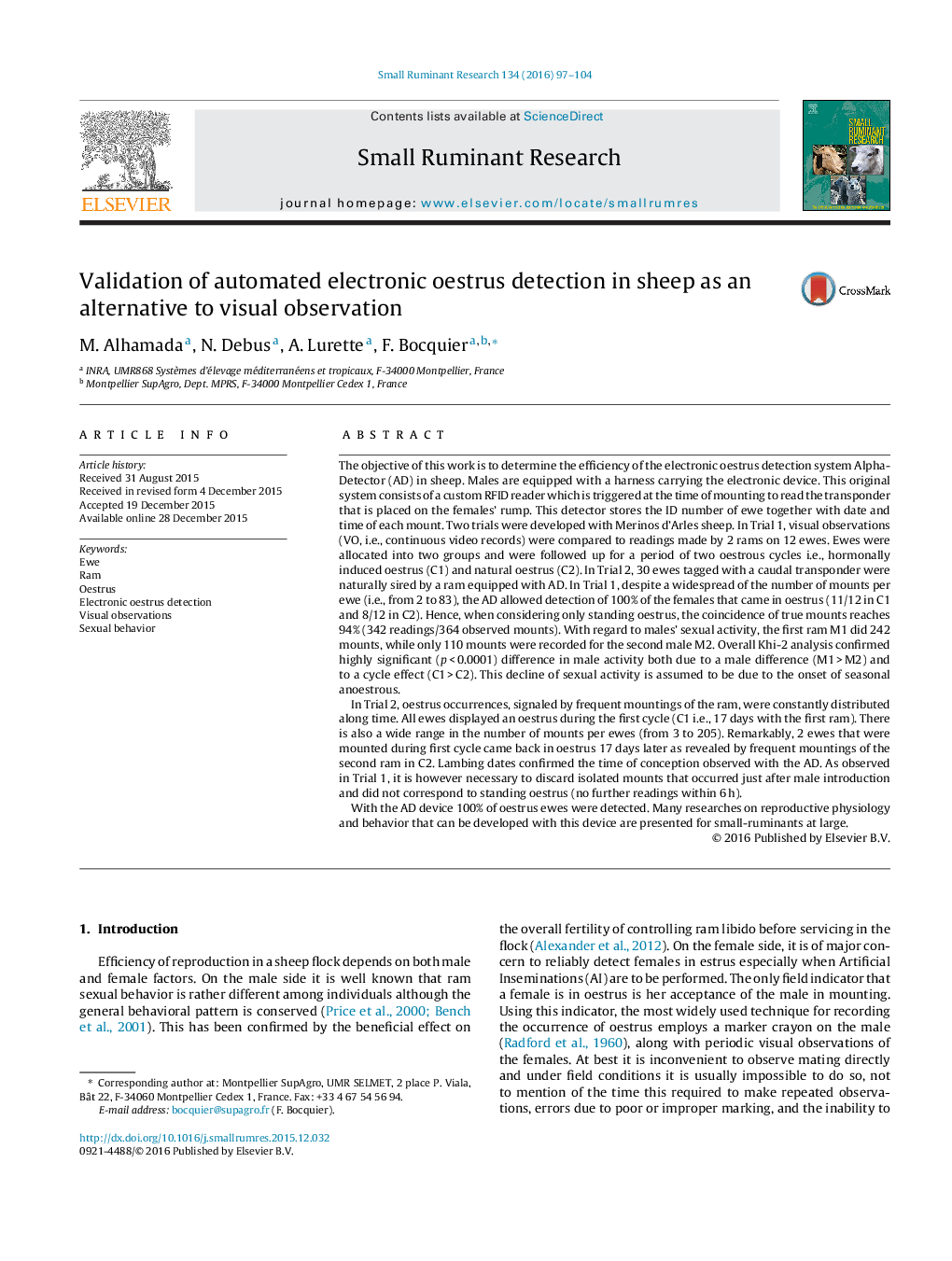| کد مقاله | کد نشریه | سال انتشار | مقاله انگلیسی | نسخه تمام متن |
|---|---|---|---|---|
| 2456889 | 1554358 | 2016 | 8 صفحه PDF | دانلود رایگان |
• This new oestrus detector is bases on RFID reading of ewes by an equipped ram.
• Remote data transfer does not necessitate animal handling.
• Efficiency of standing oestrus detection is similar to video observations.
• This detector fits to natural or hormonally induced estrus in the ewe.
• This is a promising tool for behavioral researches in both males and females.
The objective of this work is to determine the efficiency of the electronic oestrus detection system Alpha-Detector (AD) in sheep. Males are equipped with a harness carrying the electronic device. This original system consists of a custom RFID reader which is triggered at the time of mounting to read the transponder that is placed on the females’ rump. This detector stores the ID number of ewe together with date and time of each mount. Two trials were developed with Merinos d’Arles sheep. In Trial 1, visual observations (VO, i.e., continuous video records) were compared to readings made by 2 rams on 12 ewes. Ewes were allocated into two groups and were followed up for a period of two oestrous cycles i.e., hormonally induced oestrus (C1) and natural oestrus (C2). In Trial 2, 30 ewes tagged with a caudal transponder were naturally sired by a ram equipped with AD. In Trial 1, despite a widespread of the number of mounts per ewe (i.e., from 2 to 83), the AD allowed detection of 100% of the females that came in oestrus (11/12 in C1 and 8/12 in C2). Hence, when considering only standing oestrus, the coincidence of true mounts reaches 94% (342 readings/364 observed mounts). With regard to males’ sexual activity, the first ram M1 did 242 mounts, while only 110 mounts were recorded for the second male M2. Overall Khi-2 analysis confirmed highly significant (p < 0.0001) difference in male activity both due to a male difference (M1 > M2) and to a cycle effect (C1 > C2). This decline of sexual activity is assumed to be due to the onset of seasonal anoestrous.In Trial 2, oestrus occurrences, signaled by frequent mountings of the ram, were constantly distributed along time. All ewes displayed an oestrus during the first cycle (C1 i.e., 17 days with the first ram). There is also a wide range in the number of mounts per ewes (from 3 to 205). Remarkably, 2 ewes that were mounted during first cycle came back in oestrus 17 days later as revealed by frequent mountings of the second ram in C2. Lambing dates confirmed the time of conception observed with the AD. As observed in Trial 1, it is however necessary to discard isolated mounts that occurred just after male introduction and did not correspond to standing oestrus (no further readings within 6 h).With the AD device 100% of oestrus ewes were detected. Many researches on reproductive physiology and behavior that can be developed with this device are presented for small-ruminants at large.
Journal: Small Ruminant Research - Volume 134, January 2016, Pages 97–104
